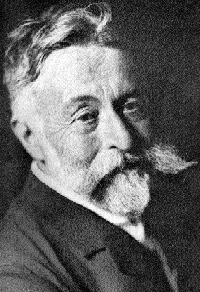Like so many of the great makers of nineteenth-century American art, Nast was a foreigner. He was born in 1840 in the little German town of Landau. His father was a musician, who played trombone in a military band. He was also a liberal of the great generation of 1848, and, with his family, he fled reaction to come to New York. Nast was a pure product of the German- American culture that in many ways dominated New York then, and still survives, in fragments, up around East Eighty-sixth Street. It was a culture built around sacredness of concert music, particularly Beethoven (Nast's father was a member of the Philharmonic Society, and, odd as it seems now, after a hundred years of darker views of Germanness, around a sense of comfort that eventually produced the American cult of Christmas. In Nast's generation, it was the Germans who brought warmth and music to a parched and tinny American Protestantism.
More important, Nast remained a German artist in the same manner that Audubon remained French. He had a distinctly German combination of liberal feeling and prim, self-righteous Protestant offense at excess; it is not always easy to separate the anti-corruption from the anti- Catholic feeling in his mature cartooning. ...
Charles J. James
Madison, Wisconsin
